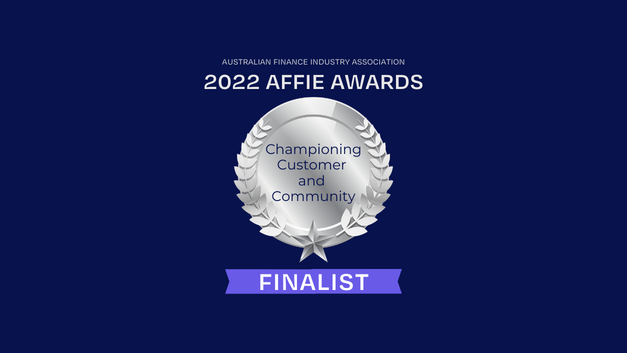How to approach the complex puzzle of student experience as its importance grows for education businesses.
In our constantly changing world – where customers have more power and choice than ever before – education providers are facing increasing pressures to improve their student experience.
It can feel overwhelming but it doesn’t need to be. This article brings together leading research and advice along with first-hand experience creating five steps to guide a successful student experience into the future.
1. Really get to know your students
Start with the basics – who are your students? This means the typical identifiers, such as age, demographics and personality, then go deeper to understand what they do and how they do it. You need to understand what they value, and what student experience they need to feel confident to learn. Try answering these questions:
- What motivates your students?
- What are their top two learning pain points?
- What is their current skill level?
- How do they like to learn?
- What types of assessment do they prefer?
Go even deeper by involving students as you develop and evolve your offering. Online construction course provider, Techskill Academy, has baked this into its process. Founder Lawrence Mackey says his team builds the start of a product and then asks students to help with the rest.
“We can’t just build cool stuff. We need to consult with what our optimal client wants.”
Lawrence Mackey, Techskill Academy
2. Understand what’s coming
Your students are not static profiles. As the world changes around them, they’re changing too so you need to keep revisiting who they are, what they’re doing and how they’re doing it.
KPMG research identified five key traits that will define students over the next decade. Students will reflect “the 5Ds” becoming more:
- Diverse – more ethnically diverse, and living and working longer
- Digital – continuing the trend that the pandemic accelerated
- Discerning – better informed and more deliberate in their choices
- Demanding – seeking personalised and frictionless student experiences
- Debt-averse – less able to pay upfront and more focused on value for money
The research focused on the university sector. However, it seems reasonable to apply the traits to the broader student market and proactively shape your courses and cultivate experiences that address them and appeal to students into the 2030s.
3. Look at the full picture
Don’t fall into the trap of focusing only on student complaints or issues. It is important to manage them but not at the expense of a strategic approach to student experience, which starts with the expectations set in marketing materials and flows all the way through from onboarding and payment to the learning experience and what happens afterwards.
There are two areas that are often overlooked or underserved, yet they have a big impact on student experience. They involve strong customer support – always being available to help students who are struggling in any way – and assisting students with employment outcomes by providing tools or pathways to help them improve their prospects.
With so much to consider, the key is to review your student experience, develop a plan and carefully choose what to focus on. For Techskill, that involved investing in significant support and training when moving courses completely online.
“A lot of our students hadn’t used online training before,” Lawrence said. “We built a product that suits them – favouring the mobile phone and with support outside business hours. It took a lot of support and training with employers and students to help them log in, show them where things are and how to use them. But once we got through that, it levelled out.”
“Our students are people with families, doing it at night, weekends and holidays. We don’t hit them straight away with a difficult unit that puts them off.”
Lawrence Mackey, Techskill Academy
4. Set and measure student experience goals
Like anything in business, you need clear goals to make student experience a success. Your goals will depend on your education business but some common ones include student satisfaction scores, student retention/drop out rates, referrals and repeat business. It’s also worthwhile asking what do you want your students to do after they’ve done your course? Can you measure that?
With clear goals in place, and the discipline of measuring them every quarter, you should be able to see any pain points throughout the full student experience picture and work to remove them.
Sometimes, things might still be unclear and this is where regular mystery shopper tests help fill in the gaps. It’s a good idea to involve leaders and people from all levels of your team in these over time so they can sanity check your communications, and experience what is being promised and what is delivered.
5. Make student finance an enabler
Traditionally, finance has been a barrier to education. With very limited finance options for students not eligible for government support, many put courses off or dropped out when missing a payment.
ZeeFi set out to remove barriers so that students can reach their full potential and education providers can grow enrolments. We provide more options, tailored to cover student and education business needs, including the only buy now pay later product specifically for education – Study Now Pay Later (SNPL).
SNPL is available for courses valued between $500 and $20,000. It’s supported by our Payment Assist instalment plan option, available for students who don’t meet SNPL criteria. Both options mean you get paid upfront while students spread their course costs over flexible interest-free payments managed by education finance specialists. They are especially relevant as students become increasingly debt-averse, which KPMG predicts as one of the main student traits over the next decade. Its report discusses the economic impacts of COVID on wage growth combined with the debt burden on Australian households and concludes that fewer people will be able to afford upfront fees.
“In the current climate, ZeeFi gives students options. They love that. If they want to do the training but are unsure about spending money, it gives them another option.”
Lawrence Mackey, Techskill Academy
Bonus step: Embed it at all levels
Student experience is not up to one team. As outlined in step 3, each student’s experience starts with your marketing materials and ends after course completion so all teams need to view things through a customer lense. Furthermore, management consultants McKinsey & Company advise that customer-experience transformations often stall because senior leaders don’t fully understand their value.
With both these points in mind, educate your whole team about the importance of student experience. Show them in numbers so they see the direct impact it has on your business. It’s easier for everyone to make student-centric decisions when they understand how valuable they are.



